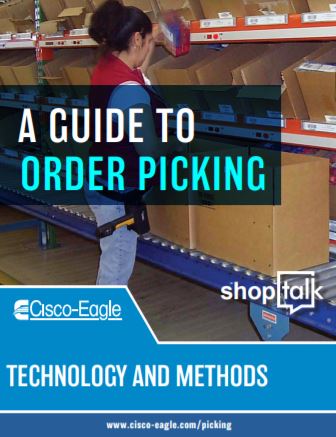Ways to Pick Full Cases Faster, More Accurately and More Ergonomically
Tactics to improve pick rates, safety and organization
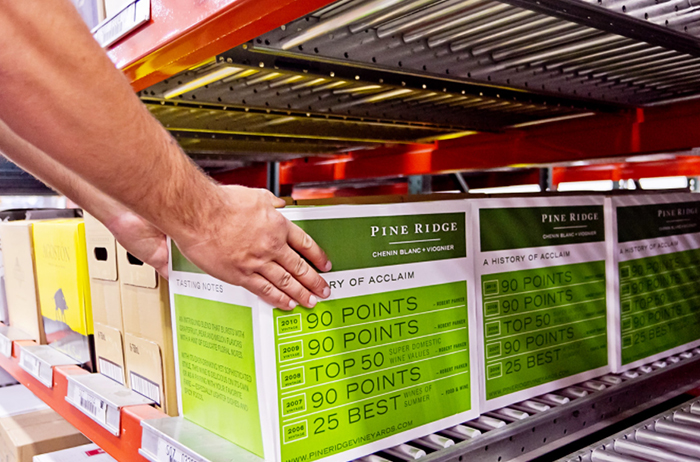
Case picking is common in most e-commerce, retail and wholesale distribution operations, so it’s important to understand the best ways to pick cartons from start to finish through a process. Most warehouse operations will need at least some case-picking capacity. Beverage and grocery distributors almost always need a large full case picking function. Since order picking commands a high percentage of distribution center labor costs, finding ways to make it more efficient is critical.
Picking to carts, conveyors and pallets
All case picking operations pull full cartons or other full loads from one place and place them onto a picking cart, conveyor, pallet or other method of transportation in sequential order without “breaking” the case. Where you’re picking to is as important as where you’re picking from.
- Picking to conveyors
- Picking to pallets
- Picking to carts
- Picking to AMRs or AGVs
For cart picks, it’s important to have a logical and intelligent slotting strategy that minimizes the time, effort and complexity of navigating stock aisles. Consider ergonomics, layout, space and product flow when you pick to conveyors.
Storage options
Generally, full-case cartons are picked from storage equipment–typically, shelving, pallets (either in racks or on the floor), carton flow or automated systems such as ASRS and carousels. Each of these storage media has its strengths, and that initial choice will probably have more impact on picking operations than any other choice you can make. Be sure the storage equipment suits the load, your operation and the ways people interact with it.

Above: cartons to be picked to a takeaway conveyor line directly from pallets in a mixed case/each pick operation. In this instance, carton flow rails present pallets to pickers for inventory rotation. In this type of operation, each lane stores a single SKU.
Case picking storage options
Fast-moving cartons should be picked from pallets
 Because you don’t have to handle them twice (once to load into storage and once to pick), leaving fast-moving boxes on pallets until they’re picked is the best way to deal with them. You can ensure rotation by sequencing pallets on flow rails so that the oldest pallet is always presented to pickers. There are ergonomic considerations with picking from pallets. One is picking underneath a rack beam, which places stress on workers’ backs and necks. The other is the stress caused by stooping to grab the lower layers. From a productivity standpoint, the time it takes to walk around the pallet can become a problem. The good news is that better picking design, lifts and other ergonomic enhancements can mitigate these problems.
Because you don’t have to handle them twice (once to load into storage and once to pick), leaving fast-moving boxes on pallets until they’re picked is the best way to deal with them. You can ensure rotation by sequencing pallets on flow rails so that the oldest pallet is always presented to pickers. There are ergonomic considerations with picking from pallets. One is picking underneath a rack beam, which places stress on workers’ backs and necks. The other is the stress caused by stooping to grab the lower layers. From a productivity standpoint, the time it takes to walk around the pallet can become a problem. The good news is that better picking design, lifts and other ergonomic enhancements can mitigate these problems.
Medium and slow-moving items can be picked efficiently from carton flow racks
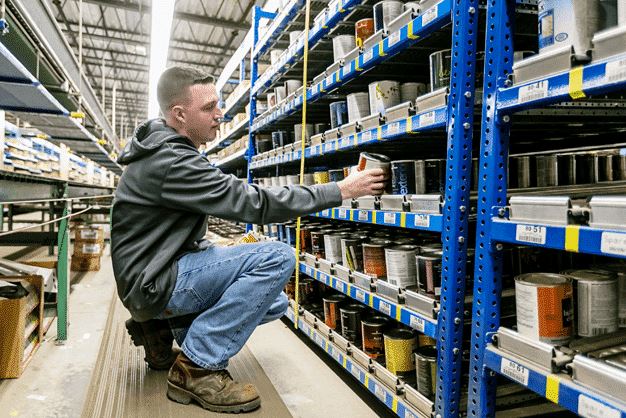
Above: warehouse worker picks a can from carton flow. This is considered a “case” pick because a single item is being chosen per pick face.
Carton flow is the choice for zone picking sequences where pickers are assigned an area and build orders. It’s an ideal goods-to-person strategy. Carton flow enforces first-in, first-out rotation, which can be critical for many inventory items.
Shelving and racks are ideal for the slowest movers
Static storage is also good for bulky loads that are infrequently picked, but be sure you assign those to storage positions that are ergonomic and reduce stress and injury risks. Heavy cartons can be picked from shelving if slotted into ergonomic positions. Racks of stored cartons are used in many applications where the cases are placed within manual reach of a worker.
Automated systems, such as carousels and ASRS mini-load systems offer higher-density storage and access
Picking cases has always been manual, but that’s changing as improved, less expensive order-picking technologies emerge.
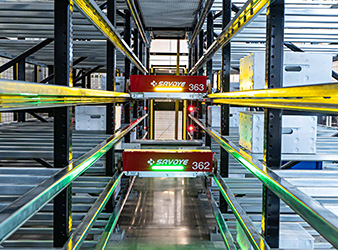 Mini-load systems can handle trays, totes and cartons in a goods-to-person scheme. These systems give you extremely dense storage profiles–meaning you’ll save space–and can deal with a variety of carton sizes and SKUs. Mini-load reduces required labor, which is important in the age of continuing worker shortages. For the applications with relatively high volume and enough available facility height, ASRS is an ideal case picking solution.
Mini-load systems can handle trays, totes and cartons in a goods-to-person scheme. These systems give you extremely dense storage profiles–meaning you’ll save space–and can deal with a variety of carton sizes and SKUs. Mini-load reduces required labor, which is important in the age of continuing worker shortages. For the applications with relatively high volume and enough available facility height, ASRS is an ideal case picking solution.
AMRs–Autonomous Mobile Robots–are another goods-to-person technology that can be used in order picking operations. They reduce walking for pickers by bringing cartons to their work zones. Since picking is costly to execute, AMRs can act either to deliver the carton or take it away, depending on operational design.
Carousels and VLMs are similar in function to mini-load, in that they bring product to pickers. They are more frequently used in each-picking, but are a viable case picking technology in some instances, such as multiple picks of the same case.
Case picking ergonomics
When workers are picking full cases, ergonomics always matters. The type of storage, type of picking medium and the pick-to strategy all impact picking ergonomics.
Picking heavy cases: position & locations are key
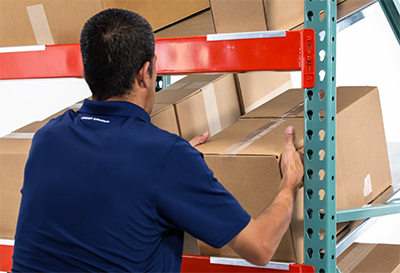 Heavy cases should always be situated in the golden ergonomic zone between the waist and shoulders. Ideally, workers shouldn’t have to lift these cases at all. When they’re picked from pallets, it’s critical to ensure people aren’t bending down to access the lower layers. Using a pallet positioner or similar technology helps reduce strains of this nature. When they’re picked from carton flow, be sure there is adequate vertical space between carton tops and the pick layer above them. This allows the picker to adjust a hand beneath the carton. Knuckle ends on the carton flow let people more easily grasp heavier cartons for safer picking.
Heavy cases should always be situated in the golden ergonomic zone between the waist and shoulders. Ideally, workers shouldn’t have to lift these cases at all. When they’re picked from pallets, it’s critical to ensure people aren’t bending down to access the lower layers. Using a pallet positioner or similar technology helps reduce strains of this nature. When they’re picked from carton flow, be sure there is adequate vertical space between carton tops and the pick layer above them. This allows the picker to adjust a hand beneath the carton. Knuckle ends on the carton flow let people more easily grasp heavier cartons for safer picking.
Position heavy cases at a level even with takeaway conveyor lines when possible. This allows pickers to move the case to the conveyor line with minimal lifting and adjustment. In some cases, you can nearly slide the case to the line.
Seconds matter: Slicing a few seconds per pick when you’re picking hundreds of cartons a day can add up to significant time savings and increased efficiency. What techniques, equipment and equipment materially reduce the time to execute a pick?
When picking to carts, workers should pick heavy or bulky cartons before other portions of the order if possible, so that they aren’t trying to arrange the cart as they travel through the picking process.
Fast-moving cases
Fast-moving cases should be situated in easy-access positions in the golden zone, even if they’re not particularly heavy.
Picking technology: light-directed, voice-directed and RF
 Each of these technologies can be used in case picks.
Each of these technologies can be used in case picks.
- Light-directed picking tends to shine for each-picking operations, but can serve well in some case-picking applications with dense, mixed-SKU storage. These should be relatively higher volume picks to conveyors or other takeaway technologies. Picking from pallets is difficult for light systems unless you have dedicated storage lanes within a rack structure where light modules can be mounted.
- Voice-directed picking tends to be more viable than light-direction because it’s ideal for picking from pallets in high-speed operations. As long as the system can guide pickers to the correct location, voice systems are the best of these direction systems for case picks.
- RF and barcode scanners are a good technology for case picks, even with the disadvantage that pickers must hold the RF gun to scan the carton, then remove it to pick cases two-handed. The speed gained from picking direction tends to offset that lost time.
Pick modules and case picks
Pick modules deployed for case picking offer both storage and picking density. Since the storage systems tend to be versatile, you can segment a pick module between full and split case picks by adding zones for various SKUs. If an item can be picked full or case, you can slot the full and split cases near or directly beside each other. Most pick modules are built with multiple levels with takeaway conveyor lines between storage zones.
To go faster: One way to increase picking speed is to set floor pallet locations for your fastest-moving SKUs at either the start or end of your pick module lines. Done correctly, this will reduce transit times and distances for your most popular picks. It also reduces the time needed to replenish those SKUs and gives you more flexibility.
Pick modules are a tried-and-true method for improving picking operations while conserving floor space. Workers aren’t meandering through the warehouse to find picks, and conveyors can sort and buffer cartons as they move toward shipping.
Download the Cisco-Eagle guide to order picking
When it comes to picking orders, you have many options: equipment types, methods, technologies and more. Download our guide to order picking to read tips and articles from our expert employee-owners. You’ll find practical examples of ways to cope with ergonomics, slow movers, various picking systems and much more.
Download the guide today
Tags: Automation
Scott Stone is Cisco-Eagle's Vice President of Marketing with 35 years of experience in material handling, warehousing and industrial operations. His work is published in multiple industry journals an websites on a variety of warehousing topics. He writes about automation, warehousing, safety, manufacturing and other areas of concern for industrial operations and those who operate them.




